Welcome to Tomorrow Today and this year’s edition of how ten remarkable artists proposed a vision for the Pavilion, the podium upon which the 2025 Man will rise. As you will see, there are many ways to view the role of the Pavilion — some reflections on tomorrow of yesteryear, tomorrow tomorrow, and yes, Tomorrow Today. Each unique and each a gift to the community.
The artists invited to submit a concept reflect a range of design impulses and backgrounds; all share in common a love of Burning Man and a passion for the work they create in Black Rock City. As you will discover, participating in Burning Man was a catalyst for these artists’ creative journeys. Over the years, they drew inspiration from Burning Man, began bringing art, and ultimately were tapped to submit creative concepts for the 2025 Man Pavilion. Black Rock City has a way of turning people into artists, then inspiring them to build audacious things. What do YOU dream of creating?
Let’s get to know the creators behind this year’s Man Pavilion concepts — their art, and the designs they submitted. Gradually, we’ll make our way to sharing this year’s chosen design.
Antwane Lee
Antwane began by making art for Regional Events in the Midwest before and submitting a proposal to bring an Honoraria artwork to Black Rock City. Awarded a grant but delayed by the COVID-19 pandemic, Antwane brought “The Solar Shrine” to Black Rock City in 2022. Self-described as an Afro-Futurist, Antwane is both an architect and an artist who lives in Chicago.
Antwane says about Burning Man:
Burning Man brings together talented global creatives with unique views and skill sets. I feel that the artists desire to manifest societal change by integrating imagination, inventiveness, and the principles of Burning Man. I am so happy to be part of a culture where we are transforming the world.
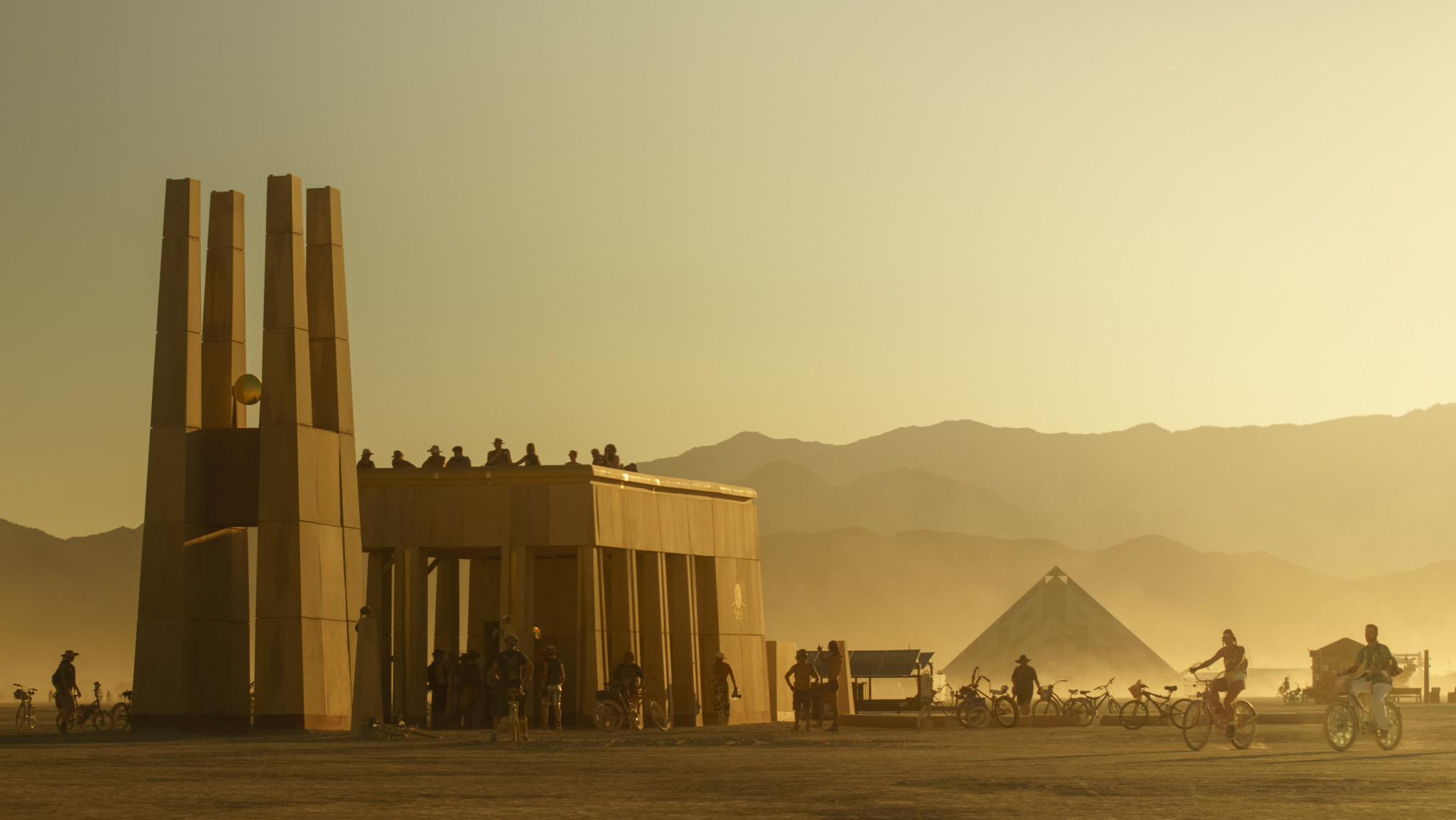
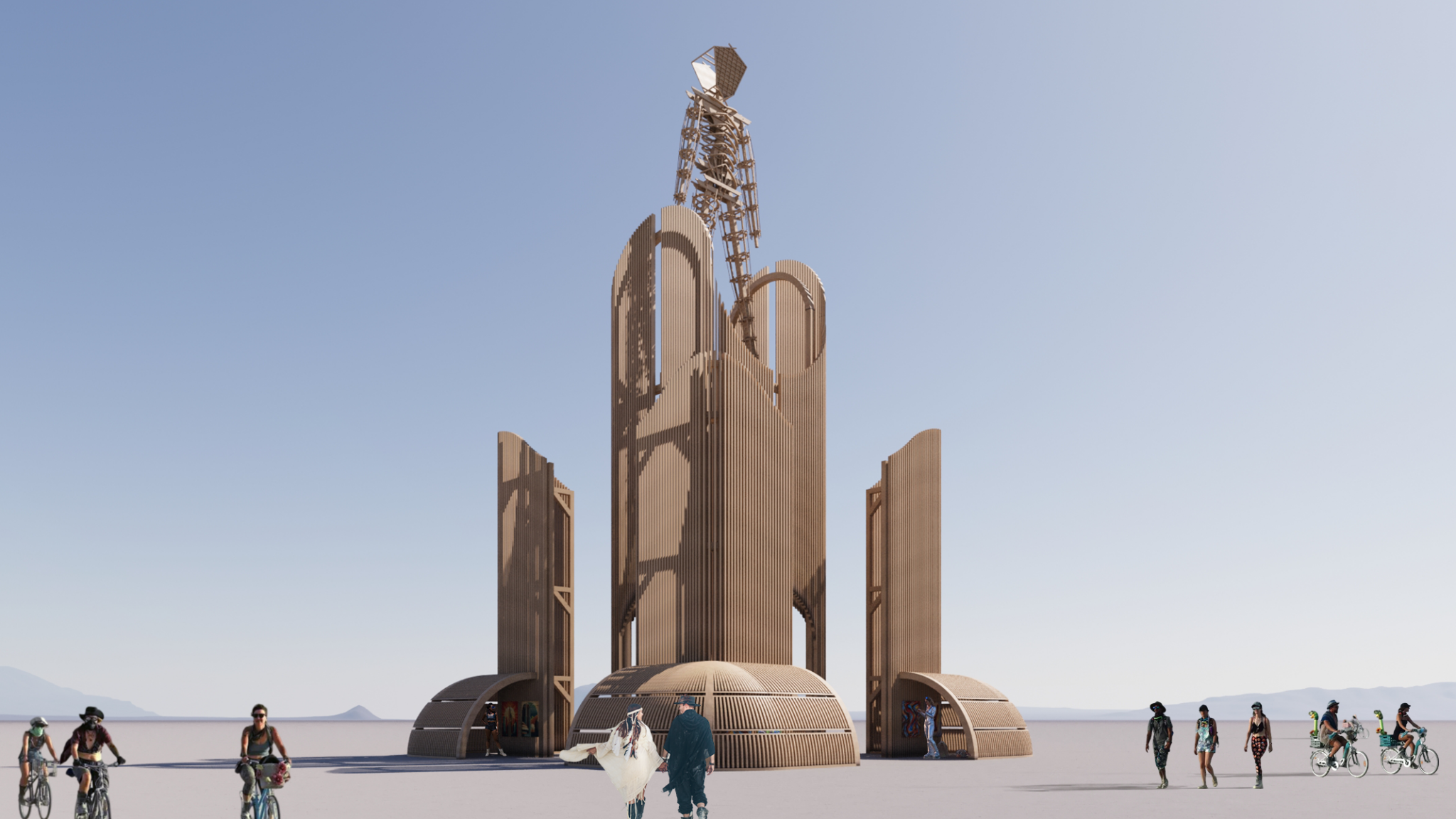
Zach Coffin
It rarely gets more epic than Zach Coffin and his love affair with rocks. His first Burning Man was 1996 and his first art project was supporting Michael Christian’s “Bone Arch” in 1997. By 2000 when the theme was “Body” he brought his first big rock, to represent the kidney. Larry Harvey asked him to make it spin (because, Larry) and that became Zach’s first “Rockspinner.” In 2023 Zach’s recent version of “Rockspinner” was opened to the public at Google’s Gradient Canopy Plaza in Mountain View. Zach tells us, “Why I started doing work at Burning Man is a very long discussion and the How could fill a book.” “Temple of Gravity,” at Black Rock City 2003 and again in 2017, had a total weight estimate of 180,000 lb..
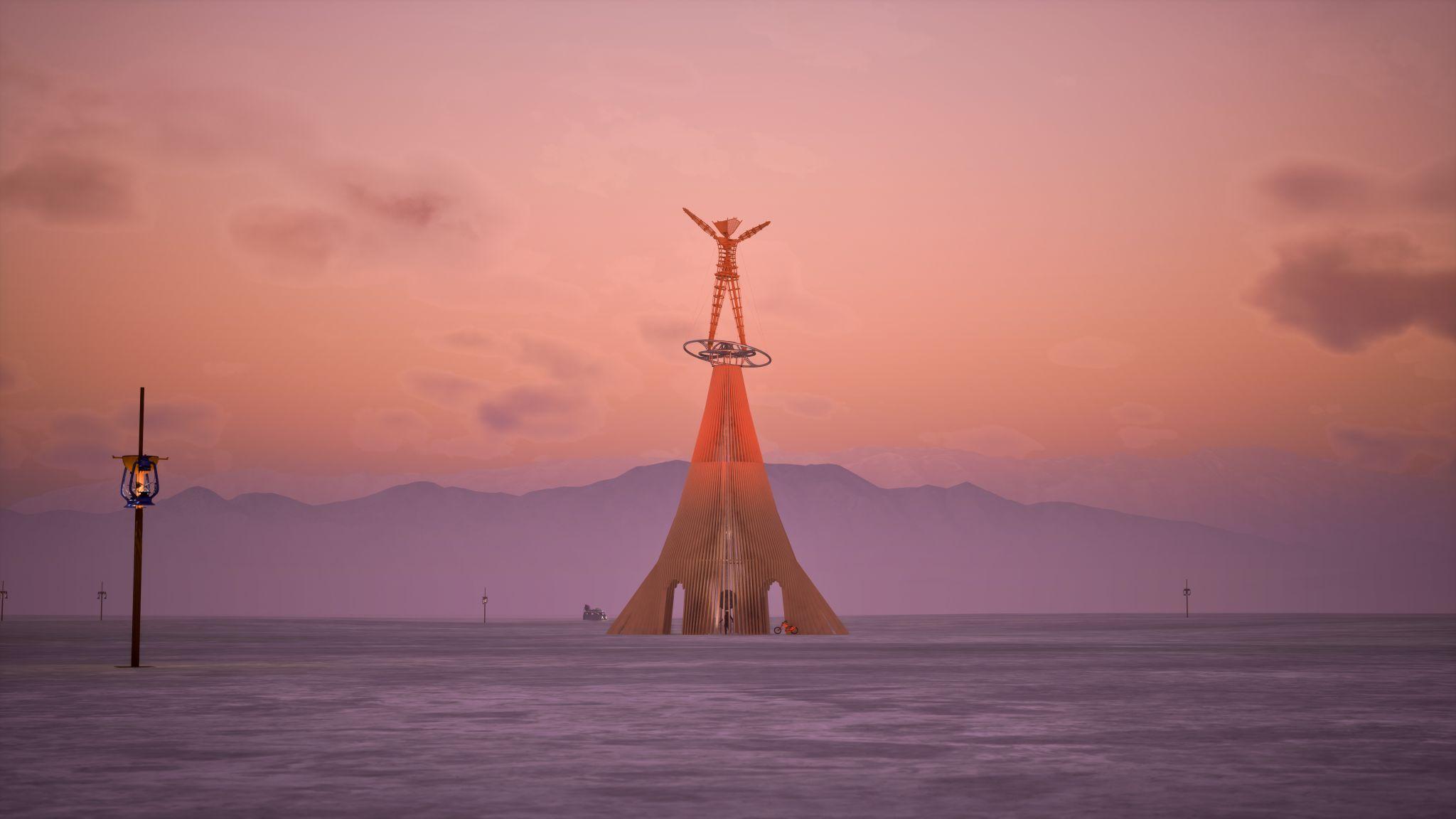
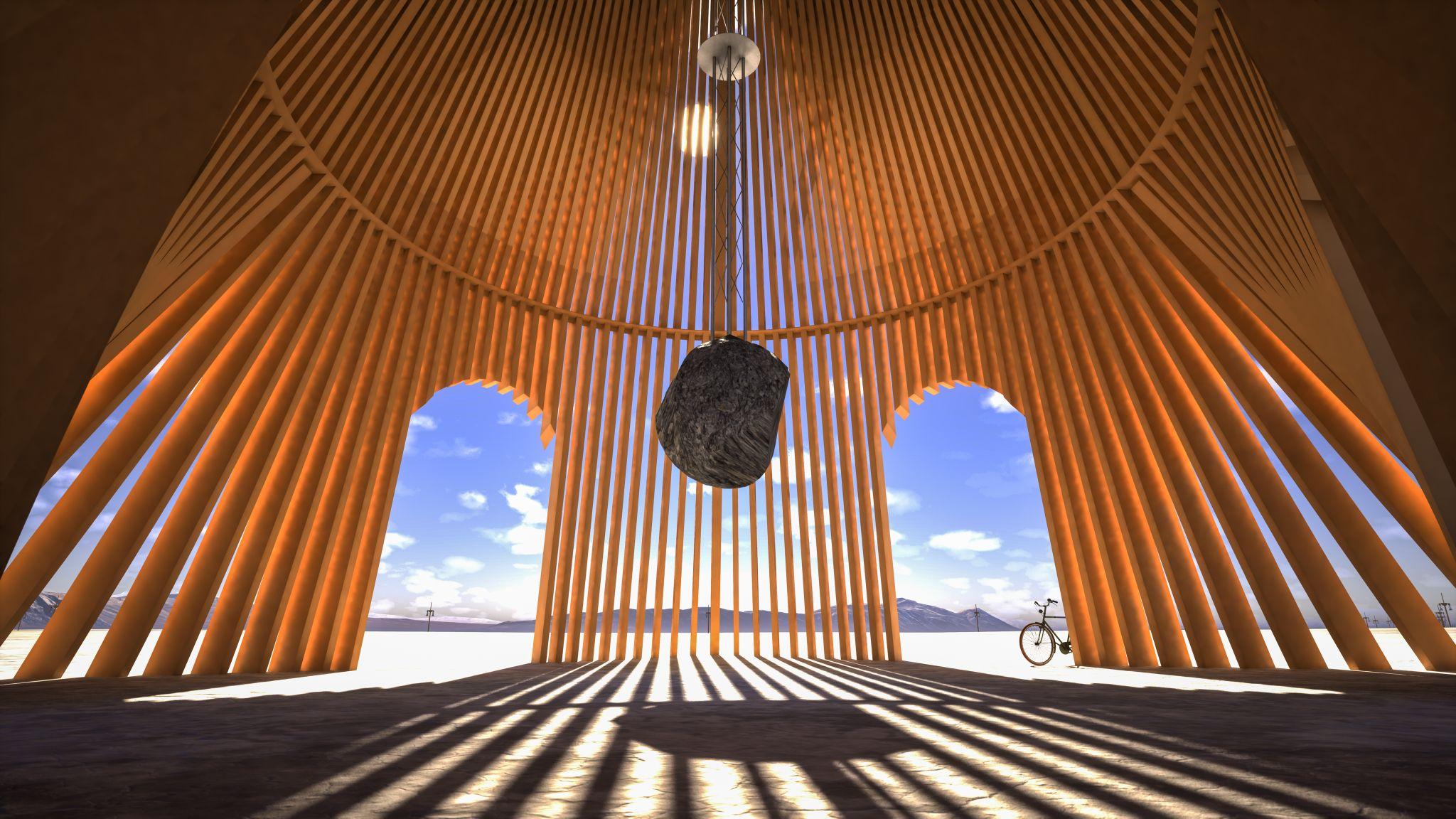
Jon Sarriugarte and Kyrsten Mate with Zolie Sarriugarte
This dynamic family trio boomeranged into the Brutalist past and brought back a mid-century approach to space age buildings for their submission. You wouldn’t think that the history of Burning Man artists goes back further than Zach Coffin, yet it does, as we listen to the unwinding tale of Jon’s Burning Man experience:
Burning Man has been a vital part of my creative journey since I first set foot on the playa in 1995. It’s not just an event—it’s a crucible of creativity, experimentation, and human connection that has shaped who I am as an artist, designer, builder, and collaborator. Before Burning Man, I was deeply involved in the Cacophony Society, where absurdity, chaos, and creativity collided in the most unexpected ways.
Kyrsten Mate, Jon’s creative and life partner is a sound designer with a phenomenal approach to immersive environments, audio, and participatory experiences. Working in the world of sound design is a labor of joy for her. As well as shaping sound, Kyrsten shapes metal, creates fantastical color schemes for art, and produces immersive sound art pieces that work in concert with large scale sculptures. Kyrsten is currently a sound designer at Skywalker Sound in Marin, California.
One final important collaborator to note is Kyrsten and Jon’s daughter Zolie Mae Sarriugarte, a sculptor and artist in her own right. Returning once again to Jon’s words:
For the last 22 years, I’ve had the privilege of sharing this creative journey with my wife, Kyrsten Mate, and our 18 year old daughter, Zolie, who has grown up immersed in the magic of the playa. Watching her and her friends engage with this culture, with the same sense of wonder and curiosity I had when I first started, has been deeply fulfilling.
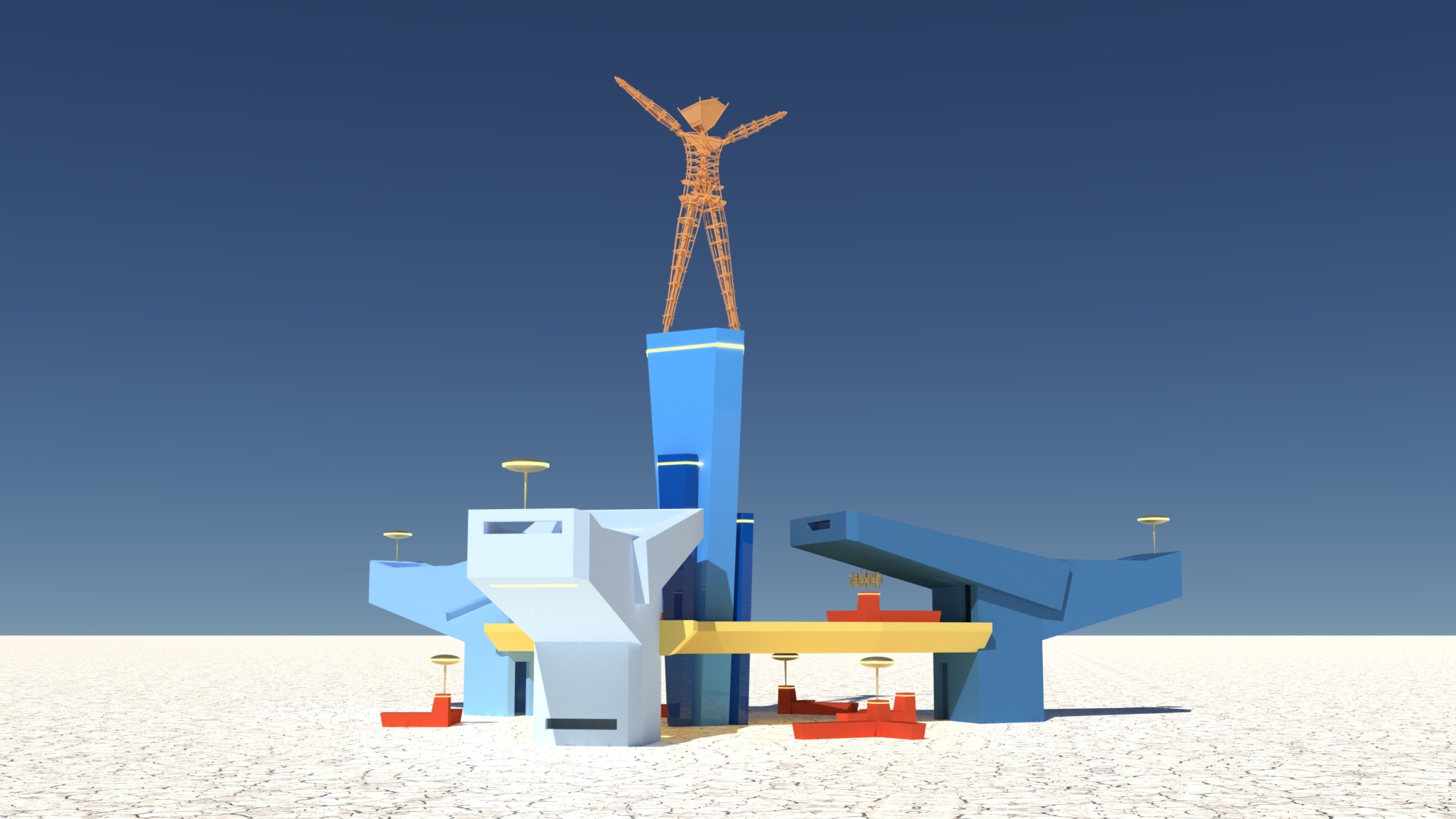
Miguel Guzman and Ivyone Khoo
Taking us back to the future are multimedia eco-artists, Miguel and Ivyone. Sculpting in mycelium, plankton, and upcycled materials, they truly ‘grow their own’ when it comes to art and materials. First time Honoraria art grant recipients in 2017, they’ve returned to Black Rock City many times in the last six years. Climate and conservation conscious, their artistry exemplifies how we can take care of the future through our choices today.
In their words:
The underpinning concern for us as makers was the amount of waste we generated and the impact of our art on the environment. Our biggest challenge was to conceptualize, design and build something that would withstand 60 mph winds, fluctuations of desert temperatures and survive the interactions of Burning Man participants. We turned to mycelium, a sustainable and biodegradable material. We developed ways to work with this material to make it ‘Playa Friendly’ and eventually learned how to sculpt and reinforce it to create larger pieces.
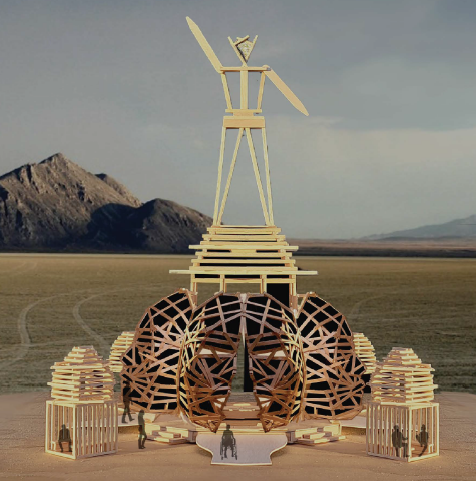
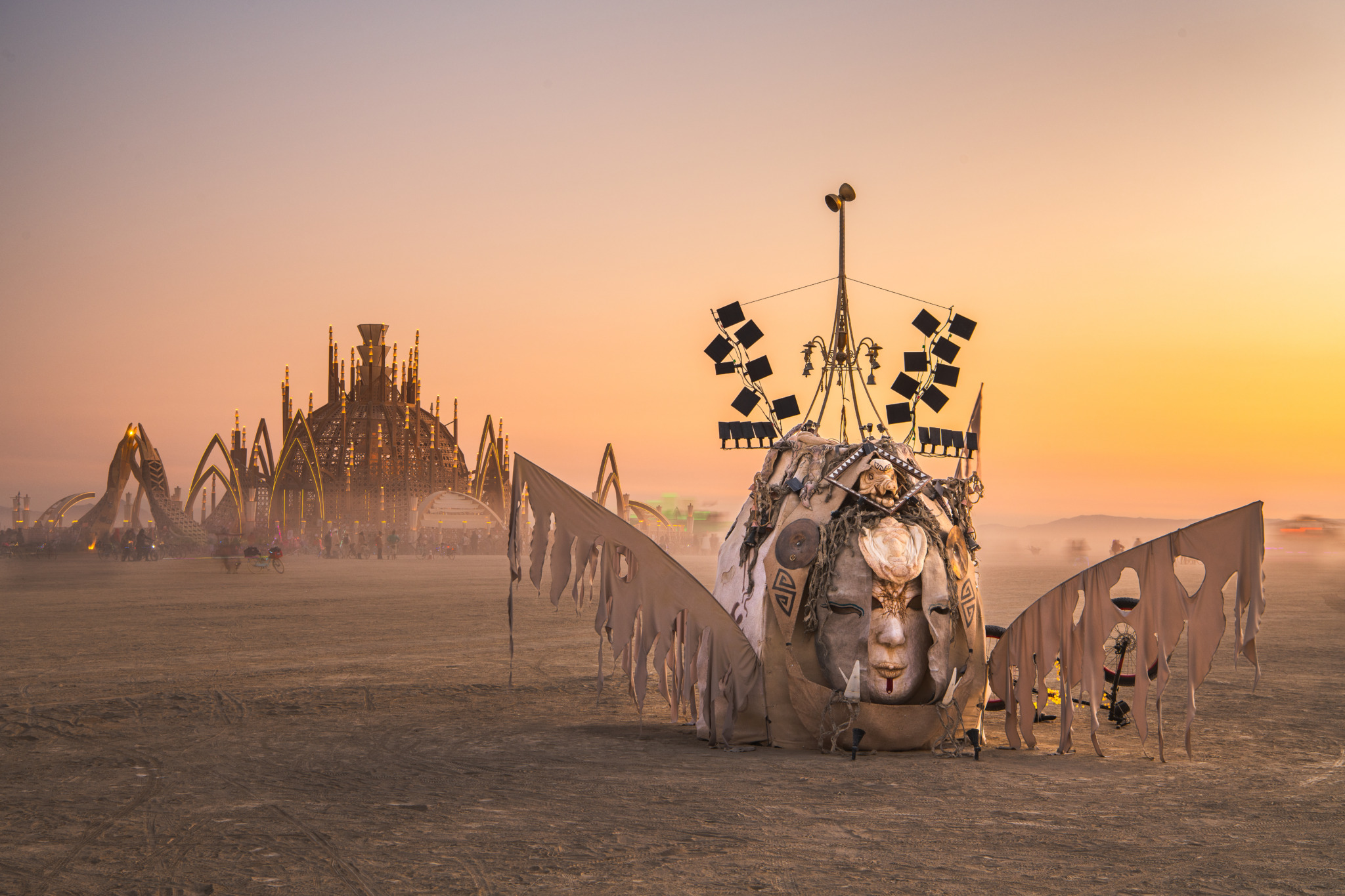
Christopher Breedlove
With the inspiration of infinity and a dedication to a regenerative future, Christopher Breedlove is a constant inspiration and his impact over time is beyond measure. Christopher’s involvement with Burning Man goes back 19 years, first as a Regional Contact, and then as the leader for Burners Without Borders. His design includes an ‘infinity walk’ inviting us to connect with the cyclical nature of time, innovation, and the eternal quest for a better future. Underneath he designed a gallery walk where innovative and regenerative ideas from across the community can be shared — something we plan to explore with the design we selected.
Christopher states:
Although much of my large-scale installation and design work has taken place outside Black Rock City, I see my contributions within BRC as acts of narrative creation, world-building, and social experimentation. For me, Black Rock City is an unparalleled canvas for experiential production and ontological design — an opportunity to experiment with new ways of being, foster community, and dream about how we might bring these lessons back to the world.
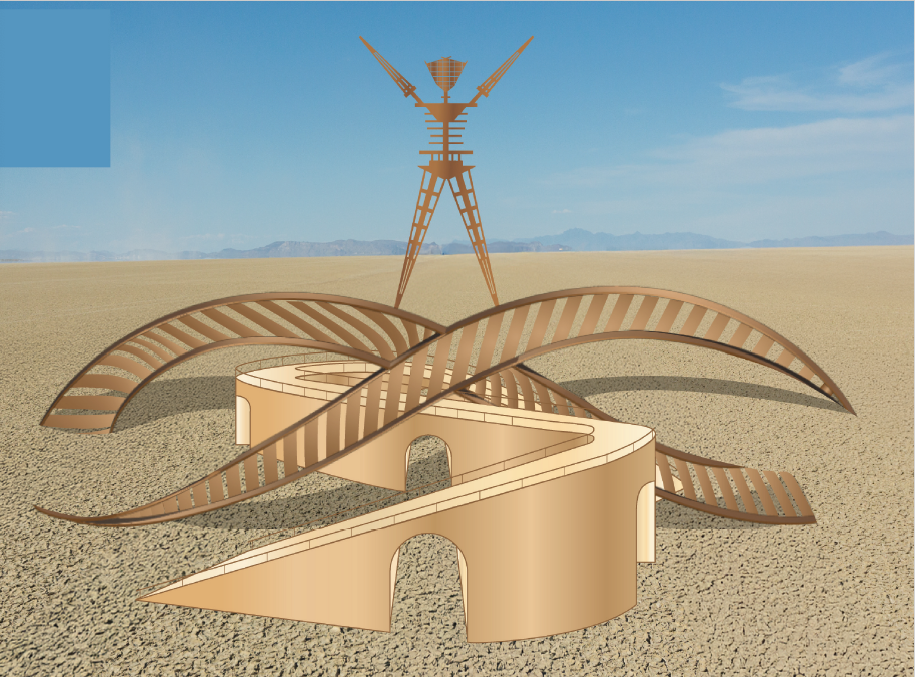
Diane Hoffoss and Gordon Hoople
There is nothing mundane about Diane and Gordon’s vision for Tomorrow Today. In fact it’s spectacular and audacious and beautiful. We think of it as Tomorrow Tomorrow — and just a bit beyond reach. Titled “Equilibrium,” Diane and Gordon offer in their design narrative:
Inspired by World’s Fair architecture such as the Unisphere and Eiffel Tower, “Equilibrium” challenges visitors to shift their perspective from an individual viewpoint to a collective, global vision of the future. At its heart stands the Man supported by the globe, a powerful symbol of humanity’s shared journey and reliance on our collective home.
When asked about how they first began to come to Burning Man they share that a single math professor came and was inspired in 2016, which then became this story:
Our first piece of art together as a team, “Unfolding Humanity,” was ambitious and maybe a little crazy. Two math professors and their students dreamed up a concept based on an unsolved math problem. None of us had much building experience, but being on a university campus made it easy to find expert help. Despite countless late nights on a project that overtook our lives, tens of thousands of dollars spent, and even an emergency medevac from the playa, we knew we had to keep making art. ArtBuilds was born.
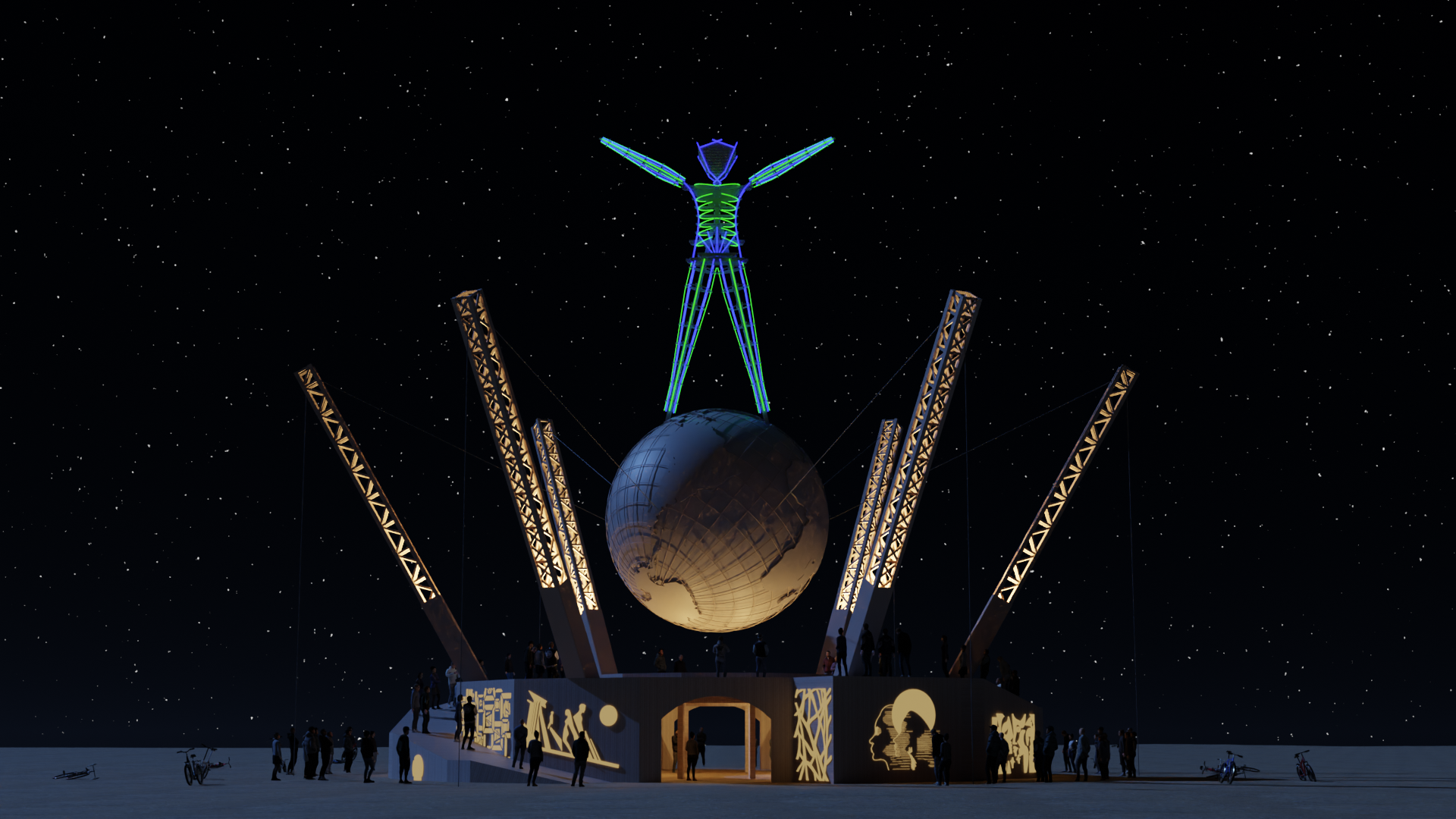 Diane and Gordon’s Man Pavilion design – nighttime view: “Equilibrium”
Diane and Gordon’s Man Pavilion design – nighttime view: “Equilibrium”
Cjay Roughgarden, Stephanie Shipman, Jacquelyn Scott
A powerful trio of women artists and builders from the Bay Area, most recently known for their 2024 art project “Naga & the Captainess,” we were excited to see what their conception for the Man Pavilion would entail. Their vision was grand and even proposed a village within the heart of the city. Their collective knowledge and experience is impressive. Jacquelyn works as a production and scenic designer for theater and film. Stephanie Shipman is a woodworker, artist, designer and teacher. Cjay is an artist and architectural metal fabricator. They are all kick ass.
Jacquelyn states:
Through making large art on playa, I have gained the greatest of friends and such an incredible community of artists who support one another. Although my career allows me to design and create, it’s always for a client or director. It’s often only once a year, at Burning Man, when I get to create something truly for myself to share with the world. Playa is such a special place to be inspired by other fellow artists with their ingenuity and tenacity.
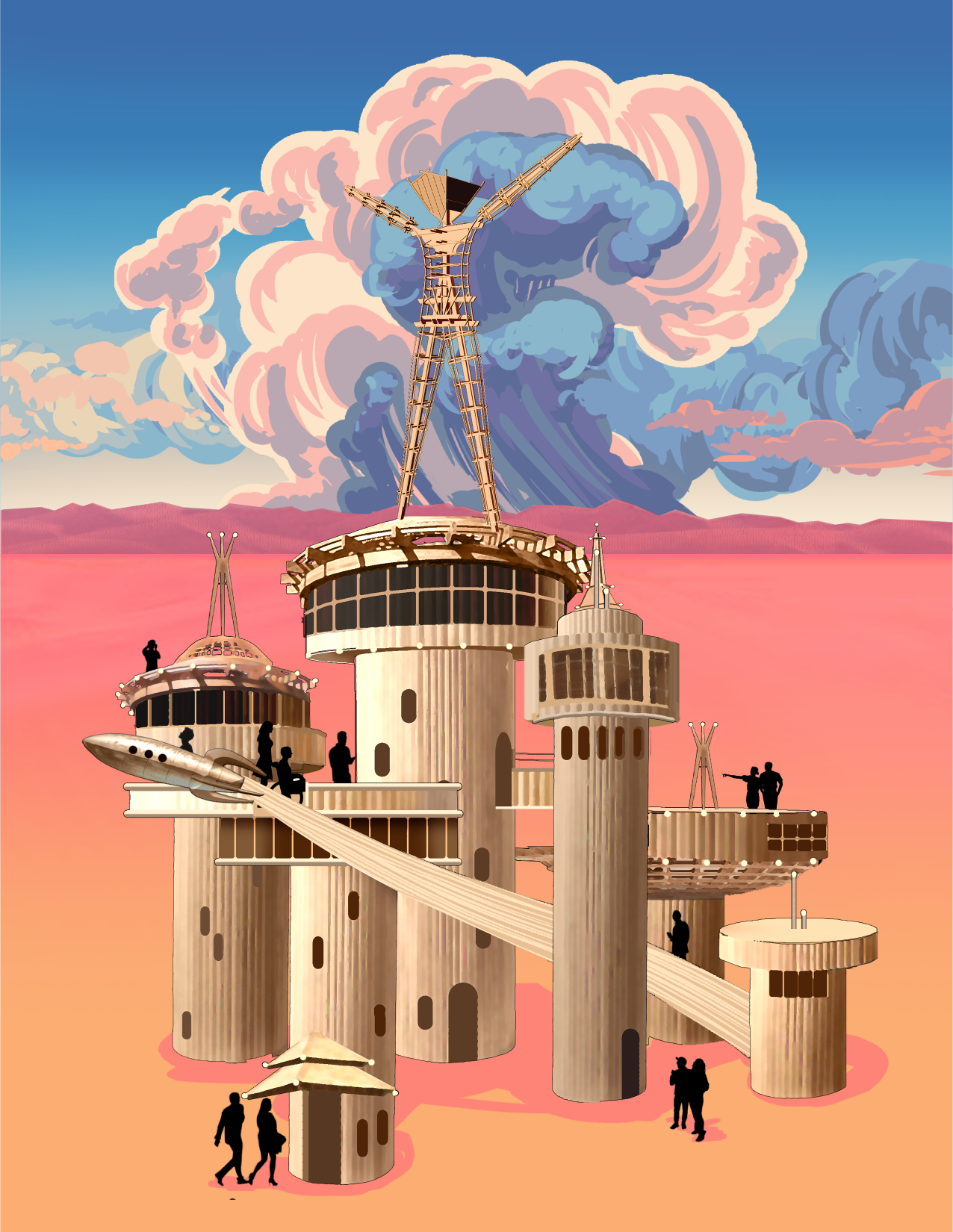
www.cjayroughgarden.com | About “Naga & the Captainess”
Silvia Rueda
Colombian architect Silvia Rueda runs Understory Creative Studio, where they create immersive installations that take inspiration from natural systems — particularly fungi and their interconnected networks. Their projects address contemporary challenges such as urban isolation, while fostering community connections through technology. Silvia’s design titled, “Healing Forest” is elegant and subdued, drawing on recycled wood and relying on lighting to animate. The creative concept is constructed along with a poetic narrative. It seems best to share a portion of that narrative as the inspiration is vast and timely:
A single tree, ancient and gnarled, remained in a forgotten grove hidden from human eyes. It had seen generations fall before it, and it bore their memories in its roots. Under the faint, silvery light of a poisoned moon, the tree began to change. Drawing from the marrow of the Earth and the whispers of the wind, it awakened something new: the ability to heal itself. Wounds that would have bled it dry now sealed with bark as tough as iron. Its branches regrew faster than axes could cut. The ancient tree shared its gift, sending signals through subterranean fungal networks to the remnants of its kind. Slowly, across the barren lands, trees began to sprout anew. They healed themselves, and in doing so, they began to heal the Earth.
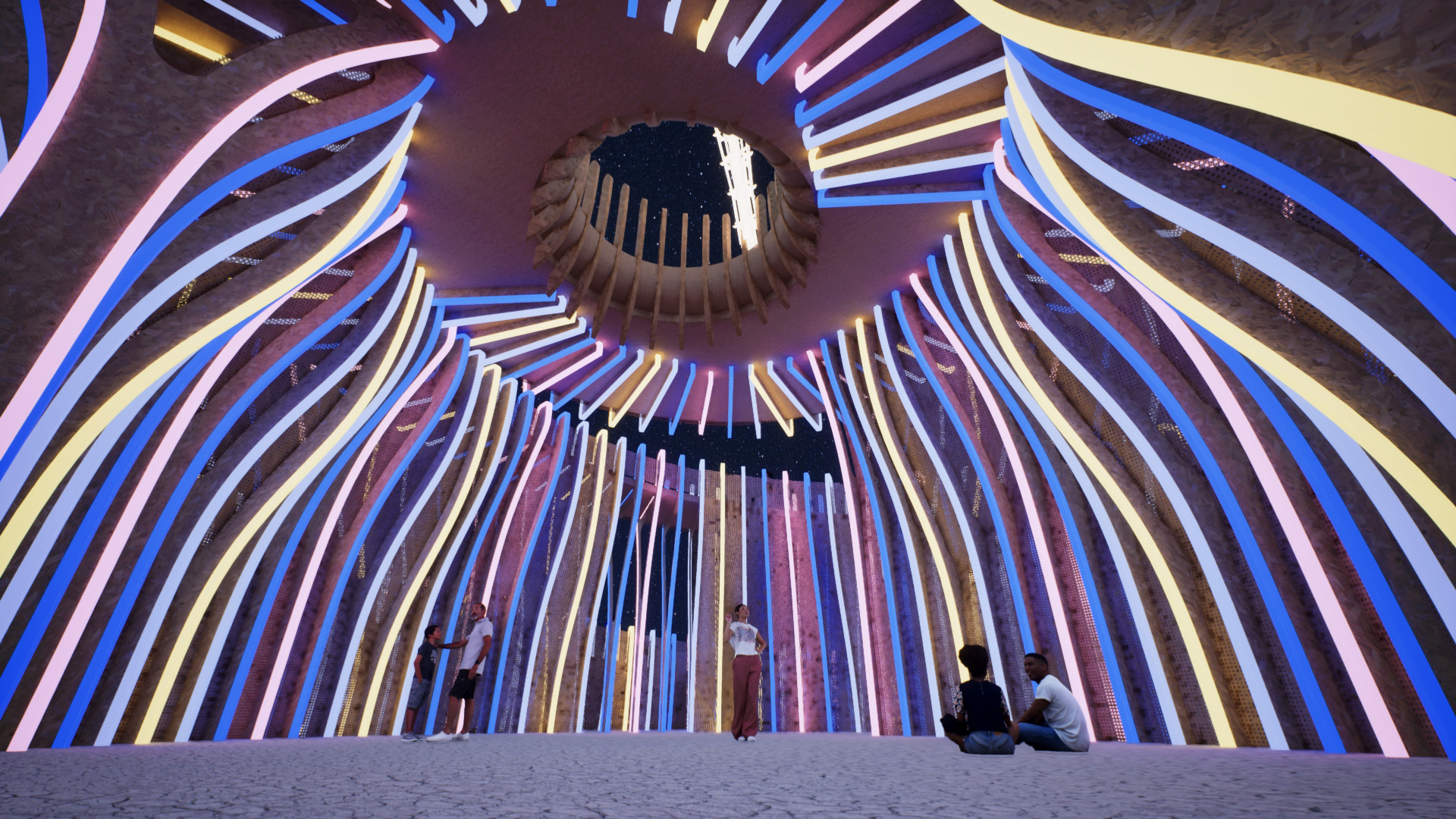
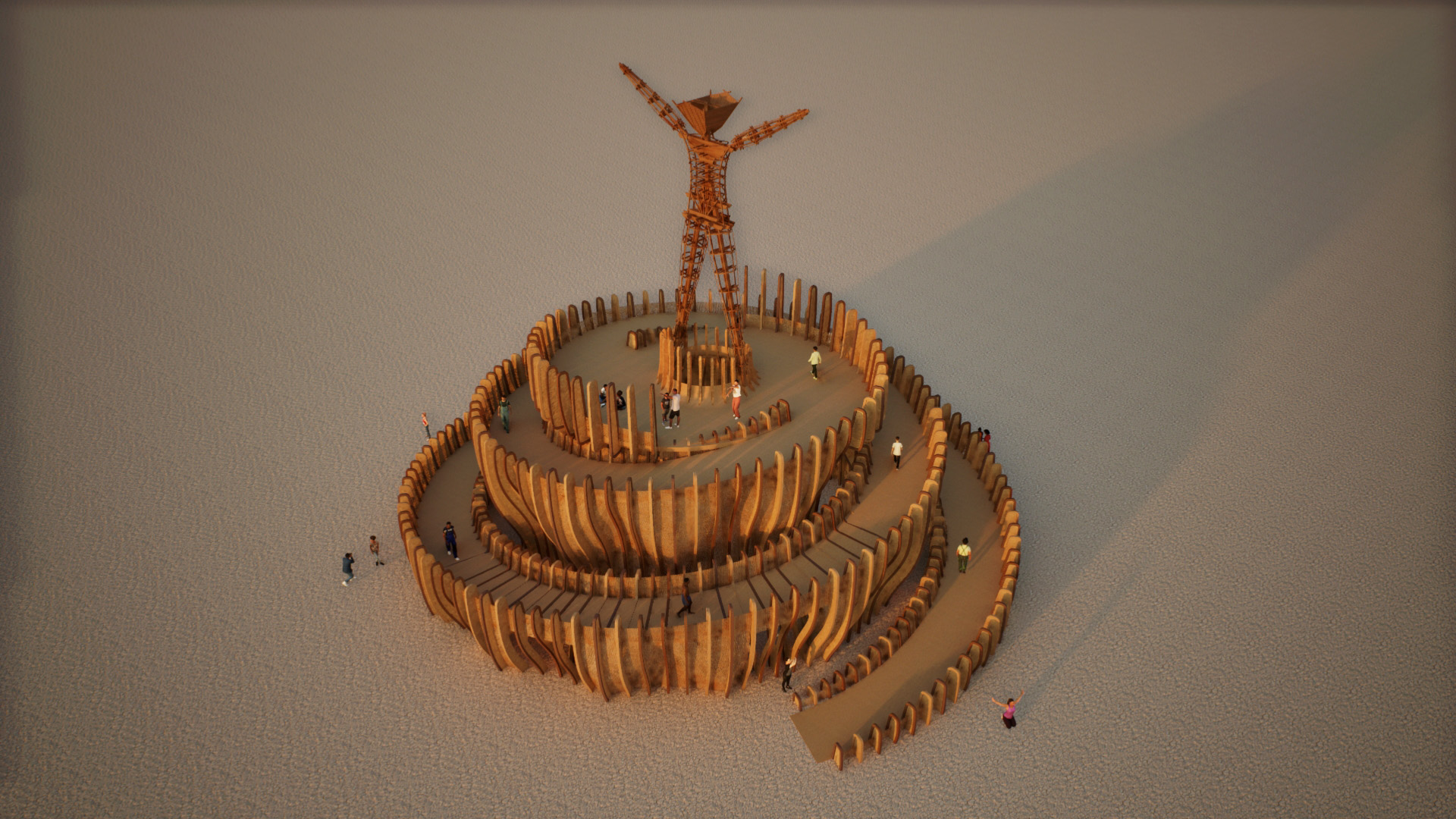 Rueda’s Man Pavilion design – exterior view: “Healing Forest”
Rueda’s Man Pavilion design – exterior view: “Healing Forest”
William Nemitoff
Grand vision, Buckminster Fuller, a global presence, are all encompassed in Wiiliam Nemitoff’s concept design. He is an artist, designer, and founder of Curious Form, an art studio specializing in digital fabrication and large-scale installations. Informed by William’s Master of Architecture degree, his work bridges the worlds of design, engineering, and public art. Rooted in the belief that art has the power to inspire connection and joy, his interactive sculptures and installations invite audiences to play, explore, and rediscover their sense of wonder. You may recall his artwork “Dream Slide,” a playful, yet lovely, unicorn slide at Black Rock City 2024.
About his design, William says:
Suspended within a glowing geodesic sphere, the Man becomes a symbol of humanity’s shared aspiration and potential. The surrounding landscape of colorful seesaws transforms participants into active co-creators, requiring them to balance and move together. Their collective actions create an up-lifting visual metaphor — progress as a shared effort that “lifts” us all. The installation celebrates play, connection, and collaboration, reminding us that the future is not a solitary endeavor but one built on trust, balance, and shared momentum.


Mark Rivera – Selected Design
Let’s get personal and share with you about Mark Rivera in his own words:
I first learned about Burning Man back in the dial up days of the internet, and it had always been on my bucket list. In 2022, I ran into a friend at a bar and she offered me a ticket. Looking back now, it was one of the best decisions of my life.
Born on March 2, 1975, in Panama City to Puerto Rican parents, I relocated to Puerto Rico in the late 1980s. By the early 2000s, I had established myself as a multifaceted professional, excelling in building, art direction, woodworking, welding, and general contracting across the film and art industries. Simultaneously, I toured as a musician, which broadened my understanding of art and its transformative power.
In 2013, I moved to Santurce, Puerto Rico, where my home became a creative hub for a street art movement. Collaborating with fellow artists, I found my passion for sculptural work, specializing in large scale mixed media creations.
In 2023, I was selected to bring art to Burning Man. At the same time, I was displaced from my apartment in Puerto Rico, which had been sold to an investor. With no other options, I had to move on and to a Puerto Rican friend’s shop in California to focus on the sculpture.
Fueled by the frustration and anger of that situation, I created “Jíbaro Soy” — a piece to show the world who I am and where I come from. A 20-foot jíbaro, with his shirt open, revealing his essence, his people, and his barrio. With his pava and two machetes in hand, he stands to protect his culture and identity, sending a message to the world no one can take who I am.
And so we present to you Mark Rivera’s design, “The World Fair of Unity.” As Mark describes it:
Inspired by the World Fairs of today and tomorrow, this pavilion serves as Black Rock City’s global cultural center. “The World Fair of Unity” is a gathering place where citizens from around the world come together to celebrate creativity, diversity, and shared humanity. This pavilion is a hub of expression, a vibrant space for performances, art exhibitions, and the exchange of ideas. Whether you’re here to create, collaborate, or simply connect, “The World Fair of Unity” invites you to contribute to a collective vision for a more united and inspired future.
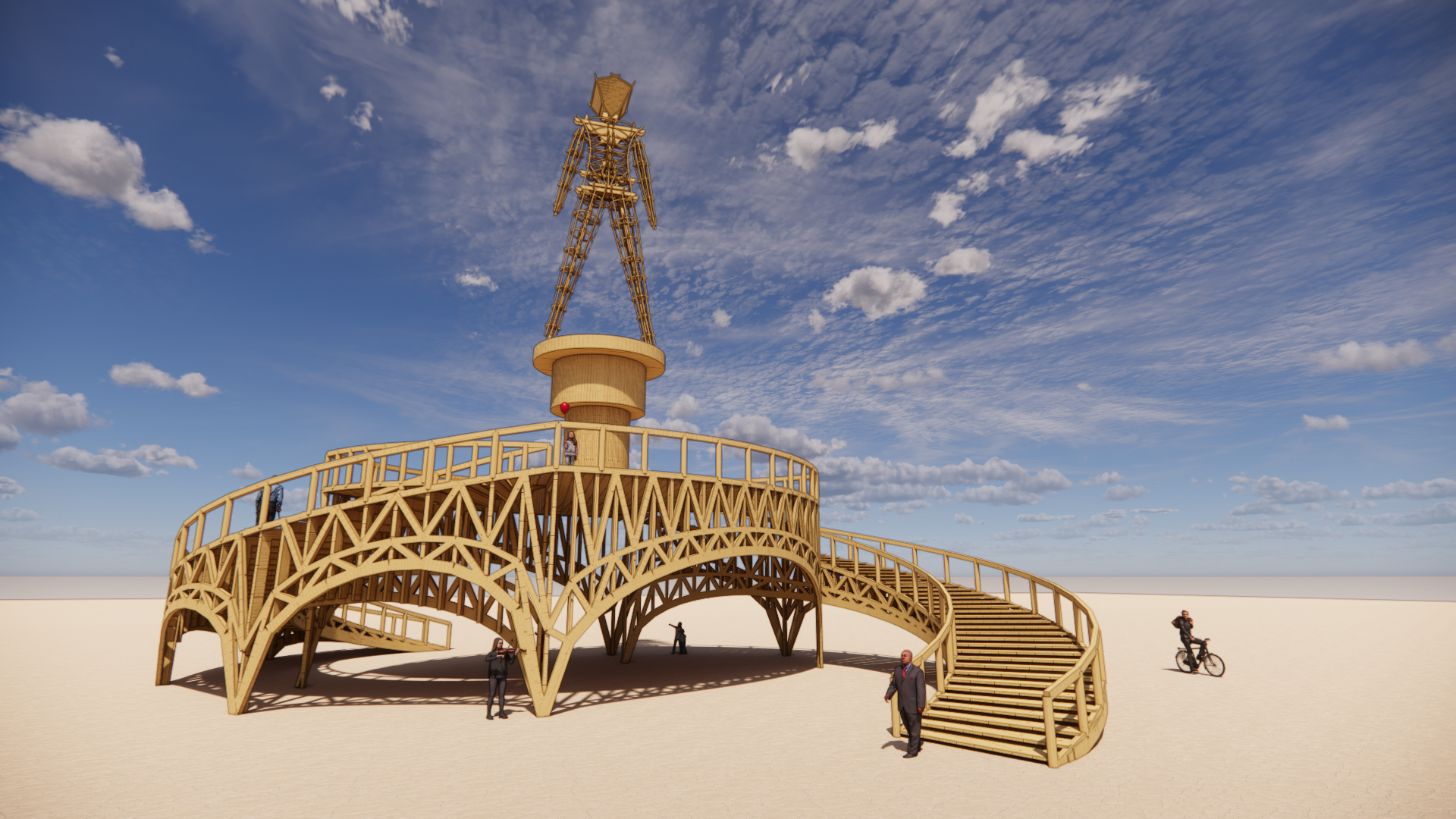
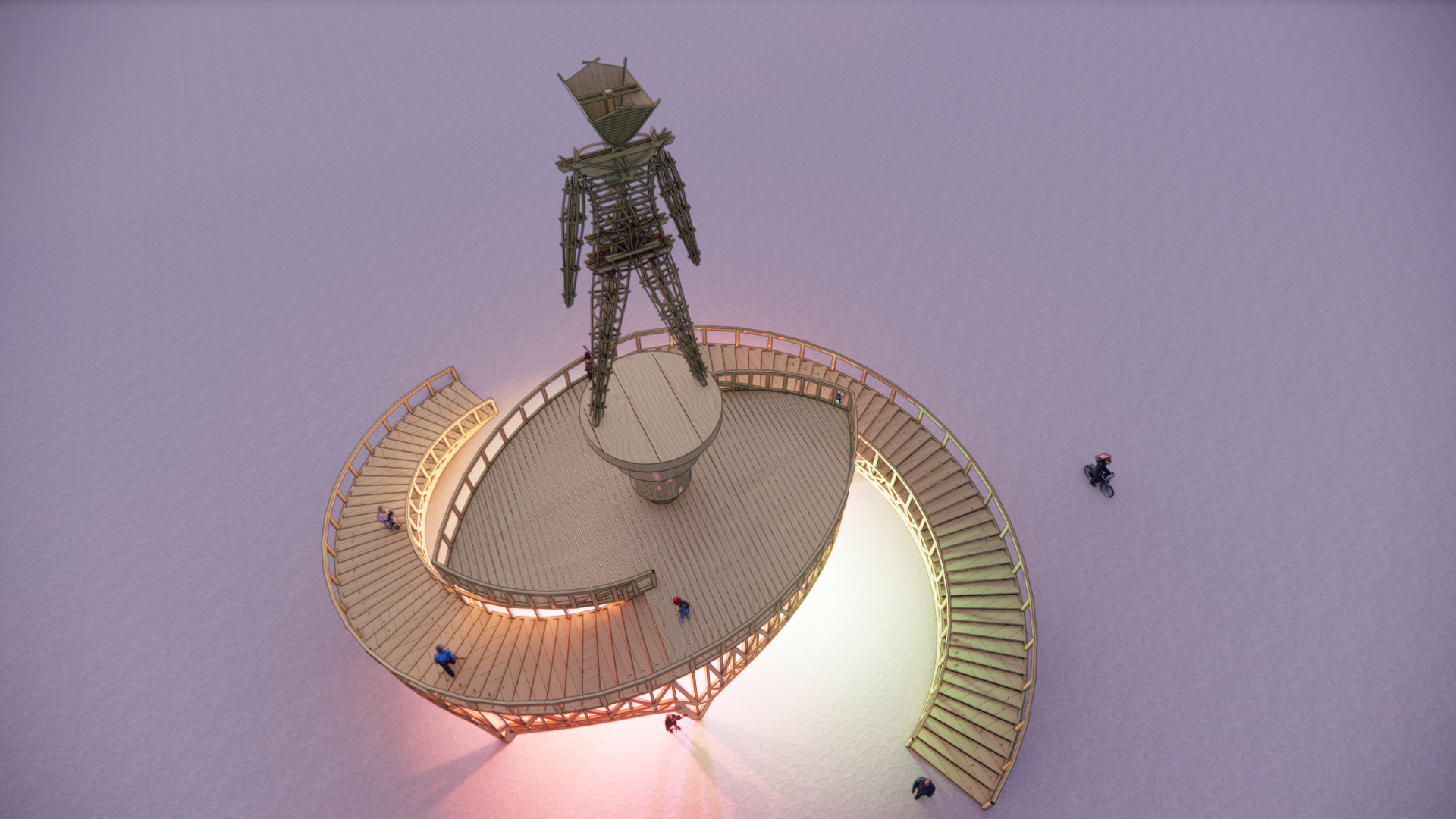
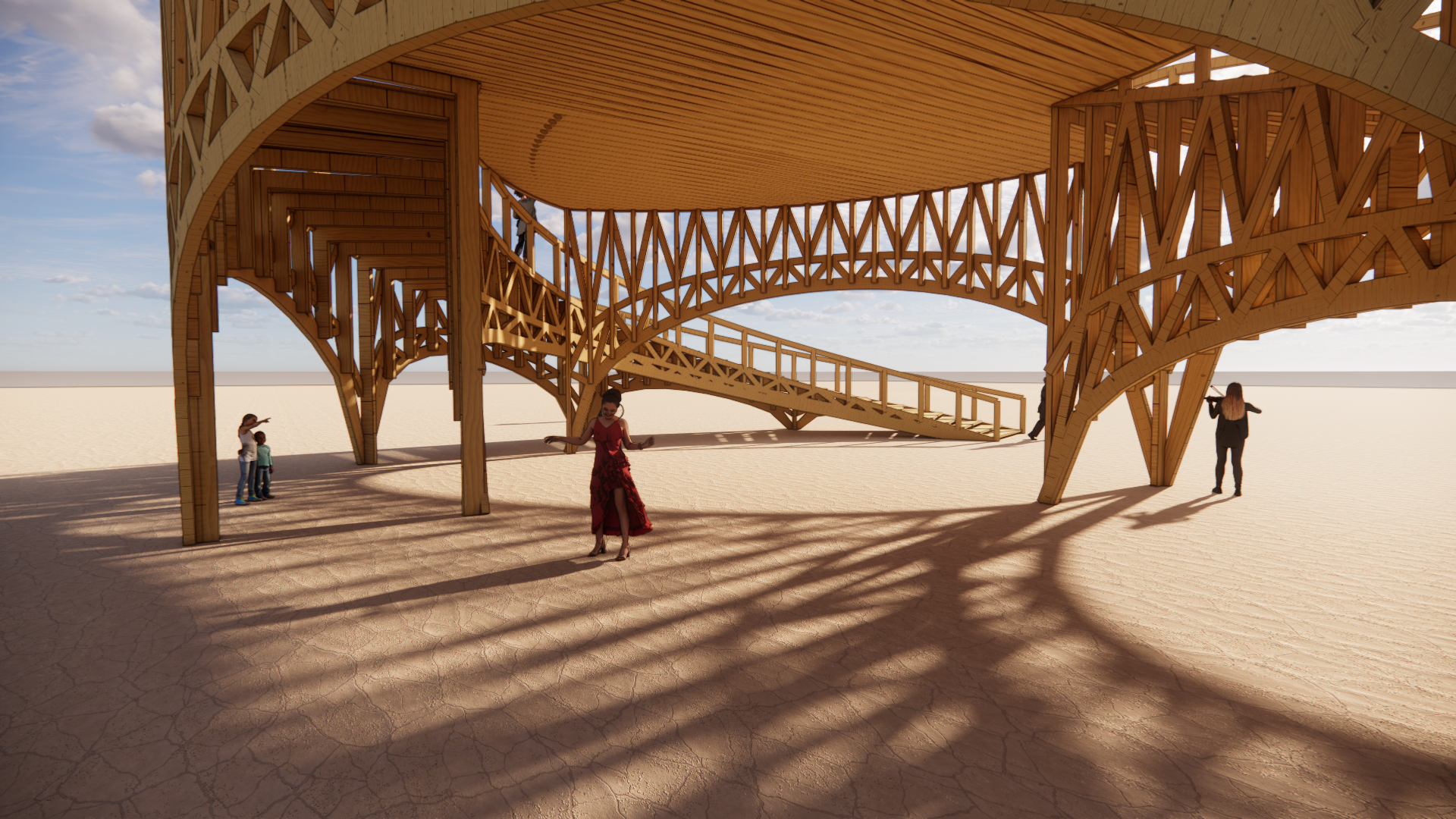
Cover image of selected 2025 Man Base design by Mark Rivera (Rendering courtesy of Mark Rivera)

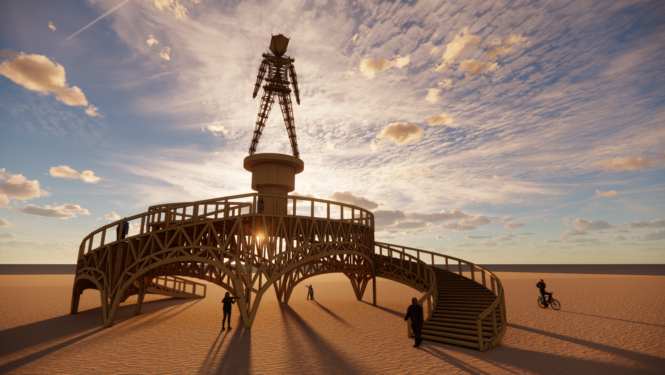
Reminder: Burning Man Project has a responsibility to maintain this space for the benefit of all participants, to ensure that comments serve to enhance the experience of our visitors, rather than cause harm. While spirited conversation is welcome, unruly and rude behavior is not. Posts that are harmful to others or run counter to the spirit of civil discourse may be removed.
Please review our COMMENT POLICY here, then comment with care: https://journal.burningman.org/comment-policy/
Report comment
I have to laugh because it comes so close to being an accessible design and then, almost as if on purpose, pulls itself just short.
Report comment
I confess I looked at it and sighed “another BRC feature I will be observing rather than interacting with due to physical accessibility issues.” I know this page doesn’t necessarily tell all and practical details have been left out, but being a logistical detail that must be worked into the original plan is an all too familiar feeling.
Inclusivity as a concept doesn’t always translate to inclusivity in a tangible form. But hey, it might. Mobility Camp is always available to assist with their knowledge if camps and artists want to make their spaces accessible to more people.
Report comment
Is one or both of the ramps going to be accessible for people with disabilities?
Report comment
I’m really pleased that Mark Rivera’s design was chosen. I saw his Jibaro Soy in 2023, and really lived it. I’m just sorry I missed Habitat last year.
https://www.instagram.com/p/DFq8RvCSs_E/?igsh=NTc4MTIwNjQ2YQ==
Report comment
I wish it had benches, swings, fun gathering platforms/areas for the people at this “fair” to relax and gather. I hope burners get creative with it once there. The drawing looks minimalistic and plain, but seems like it will be cheaper to build and keep ticket prices reasonable.
Report comment
If the Org was looking to save finances on the build, I would have drawn upon the proposals of Zach Coffin or Antwane Lee. Both offered designs that relied more on ‘dead loads’ and would have been more economical to build. Facade is always less expensive because it doesn’t require the additional engineering to cradle the incredible weight of people.
Report comment
Comments are closed.